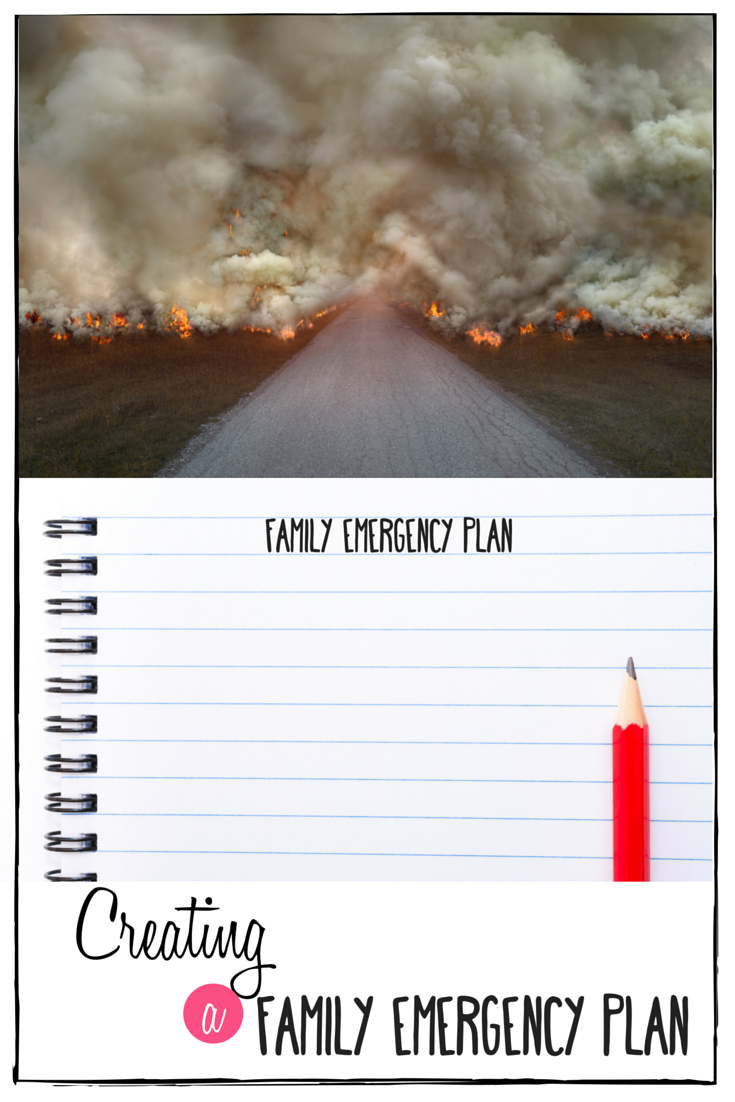Do you have a family emergency plan, a bag packed, an evacuation route, and/or drills in place to help your family prepare for an emergency? If you answered no, you are not alone. As homeschool families, I think this can be a real gap and yet it really can mean the difference of life and death. We have a lot of kids, there are a lot of things to think about. If your children know what to do in a fire, or if you have a route planned in case of evacuation, you are going to be able to get out of your house faster in a scenario where every minute counts!
We live on a little island where earthquakes and tsunamis are a constant risk, so this is a very real threat to our family and something we just cannot avoid. Whether you live in an area prone to earthquakes, devastating storms, flooding, wildfires, etc. this is something that touches us all. Even if you feel completely safe where you are at, we really do have to think of the potential for house fires, gas leaks, and other dangers. Although we don’t want to live in fear, being prepared means taking the time to create an exit strategy for your house and can actually bring a lot of peace of mind (you know, when you wake up in the middle of the night worried about this kind of stuff!). Keep reading, pin this for later, and don’t forget to share this with your friends using the buttons below.

PIN ME!
Creating a Family Emergency Plan.
Creating a family emergency plan is actually a lot easier than you might think, the work comes in maintaining it, but before you do that, grab a cup of coffee and give yourself half an hour or so to write up a simple plan using the guide below.
- Create a blueprint of your home
- Note all the exits (including windows)
- Create 2-3 evacuation routes in your home
- Designate at least 2 meeting areas away from your home in case you get separated that everyone in your family knows well and can get to.
Try this free emergency plan creator online here.
How to Pack and Prepare for an Emergency.
Less is more, if you have only a minute you can’t be grabbing 5 bags and it isn’t practical to have all that stuff either. Pack just the essentials, things like lighters, a thing of water, emergency blankets and first aide kits, inhalers or special medication, granola bars or simple food (nuts are great), etc. My goal for this year is to put all our photos on an external hard drive and throw that in the bag as well, so I have our memories without having to bring bulky photo albums. Clothing/sentimental stuff is frankly completely replaceable, though I do make sure we have sweat pants and sweaters in case we run out in our pajamas and get cold. In our situation, we also have life jackets (considering the risk for tsunamis that is) for the kids and a filter straw so we can get water from the local streams if need be. You need to consider the risks around you, your climate, and your family needs. Remember food, warmth, shelter are your primary concerns here so stay focused on those as much as you can.
How to Actively Maintain your Family Emergency Plan.
In order to maintain your family emergency plan, it needs to be fresh in your mind (and your children’s minds). We do monthly drills on the more simple evacuation routes in our home, and talk about what to do in case we can’t access the main door as well. When we first started doing this, our kids got super emotional about it. It is not an easy thing to think about, but it is so important. If, for example, their door handle is hot and they smell smoke and know there is a fire but can’t get out of their rooms, we have a procedure. the older kids are responsible for the younger ones. They have to open their windows and throw out all the blankets and pillows on the ground to make a soft bed and then they have to get out the window if the fire comes into their rooms. It is scary stuff BUT again, it could easily mean the difference of life or death. The more you talk about it with your children, what to do in a fire, what to do about smoke, what to do if they can’t find mom and dad, etc. the less fear they will have in the moment.
Other things to think about:
- Replace your batteries on your smoke detector regularly
- Buy a Carbon Monoxide detector and keep it with fresh batteries
- Keep your vehicle full of gas and have a gerry can full in the garage or shed
- Do monthly drills (or as often as you can)
- Re-assess your plan for effectiveness and relevancy every year
- Have your emergency bag ready to go
- Consider putting stickers on your children’s windows so that fire fighters can see which rooms have children in them
- Create multiple escape routes out of your town/city
- Visit your rendezvous spots often
- Talk about safe adults who may pick up your kids if you are not able to and make sure your kids know who those people are
- Keep your fire extinguisher up-to-date

